The best varieties of cherries for the Moscow region and other regions of the Russian Federation
When choosing the best varieties of cherries for your region, pay attention to yield indicators and growing conditions, taste and commercial qualities of the fruit. The best varieties are those that require minimal care, have strong immunity and bear fruit consistently.
The article will tell you about the best varieties of cherries, the rules for choosing crops depending on the region, and the features of caring for plants.
Types and varieties of cherries
Cherries are classified according to ripening time, fruit size, shape and height of trees. For fresh consumption, large-fruited varieties are chosen - they are distinguished by their tender and juicy pulp. For cultivation in central Russia, early-ripening cherries are chosen; they rarely get sick, are unpretentious in care and are frost-resistant.
We bring to your attention a description of the best varieties of cherries depending on the category of crop.
Large-fruited
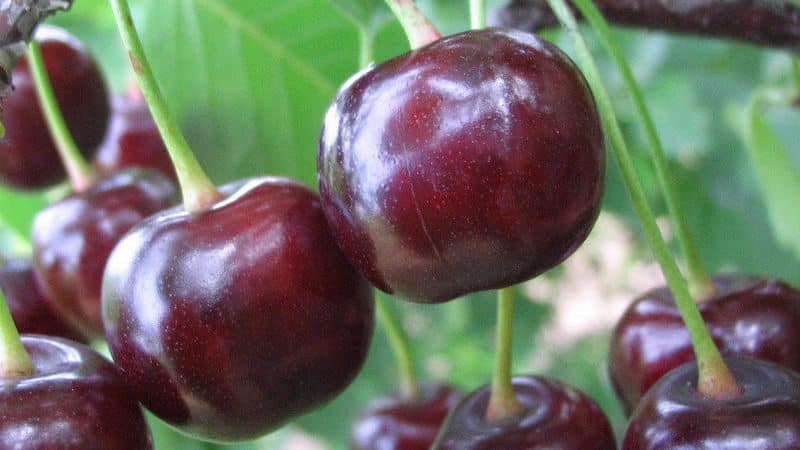
Large-fruited varieties take root both in the southern regions and in the middle zone. The size, taste and weight of the fruit depend on fertilizers - proper and balanced nutrition guarantees a sweet harvest. The trees and shoots of large-fruited varieties are strong and can withstand the weight of dozens of fruits.
Franz Joseph
The mid-late variety is winter hardy. The crown is vigorous, oval in shape. Fruit weight up to 7 g, round-heart-shaped. The skin is dense, the color is light yellow with a faint blush. The pulp is bright yellow, sweet and juicy. Medium size bone.Thanks to their dense peel, Franz Josef cherries are transported - the fruits retain their marketability and taste.
Summit
Dessert variety of medium ripening period. The bushes are tall, the crown is dense, the shape is conical. The weight of the berry is about 10 g, the peel is glossy and shiny. The pulp is bright red, juicy, the taste is sweet with a wine aroma. Summit is resistant to bacterial canker and maniliosis, and is rarely damaged by insects. Quickly adapts to the climatic conditions of the middle zone and is universal in use.
Early
Early varieties begin to bear fruit 3-4 years after landings. The harvest is already harvested in mid-summer - the berries are medium-sized and sweet. Early cherries are grown for sale and for personal use.
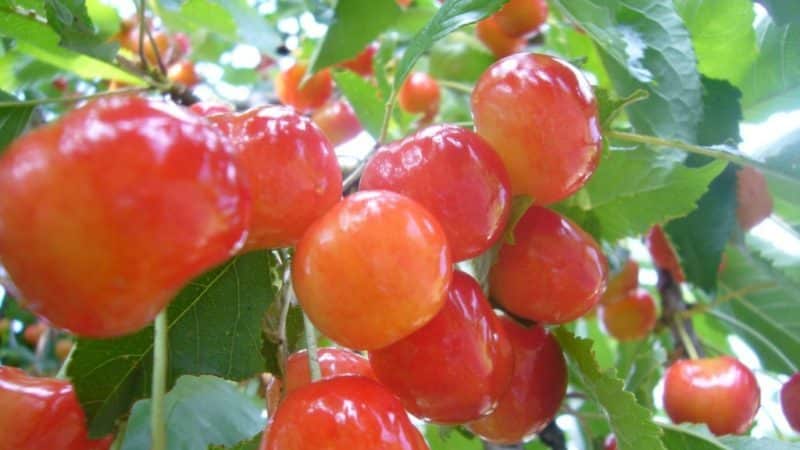
Chermashnaya
The tree is medium-sized, fast-growing, the crown is rounded. The fruits are spherical, the peel is yellow, dense. Cherry weight is from 4 to 6 g, the taste is sweet and sour, harmonious. A small bone is easily separated from the pulp. Cheremashnaya is unpretentious in care, but needs mineral supplements - the taste of the fruit depends on them.
Italian
Italian cherry is recommended for planting in the Central Black Earth and North Caucasus regions. The variety is not fast-growing, it is universal in use. The weight of the fruit is about 5 g, the taste is sweet, the pulp is dessert, the color of the pulp is pinkish. The color of the fruit is glossy burgundy. To obtain a rich harvest, summer residents cover Italian cherries for the winter, and with the arrival of spring, they spray the plantings with a solution of Bordeaux mixture to protect against pests.
Mid-season
Medium-season varieties are famous for their keeping quality and transportability - the dense peel protects the fruit during transportation. The taste of the berries is sweet and sour, refreshing. To obtain a rich harvest, it is recommended to ensure that the soil does not dry out.
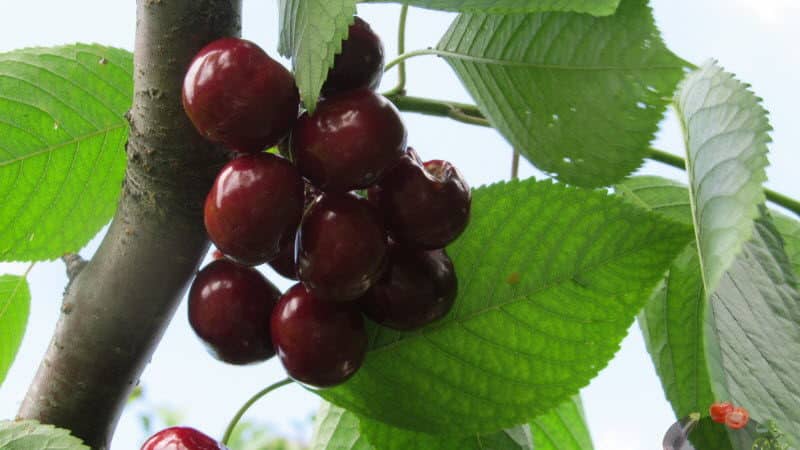
Rechitsa
A versatile and unpretentious variety to grow. Rechitsa cherries make delicious compotes, juices, and cocktails. A fast-growing tree with a pyramidal crown. The fruits are one-dimensional, the weight of the berry is about 5 g. The taste is delicate and sweet, the pulp has a dense consistency. Rechitsa begins to bear fruit 5 years after planting. Resistance to viral diseases is average.
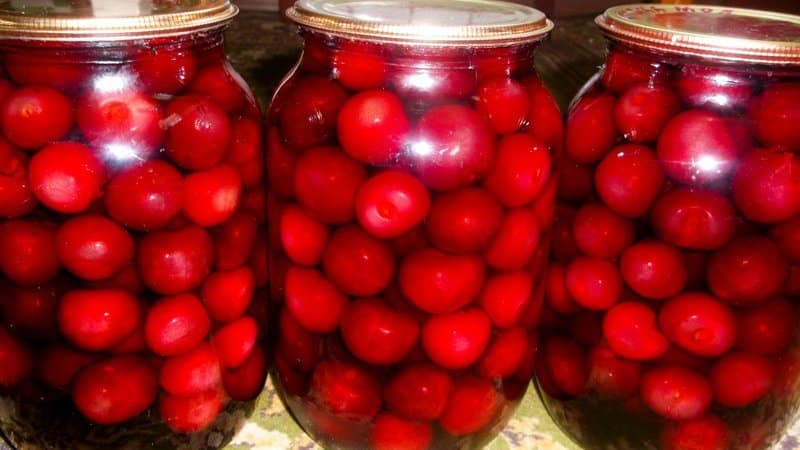
Adeline
A medium-sized tree with a pyramidal spreading crown. It bears fruit in the fourth year, the shoots are straight and brown in color. The variety is recommended for planting in the Central Black Earth region. Fruit weight 5.5 g, heart-shaped, dark red color. The flesh is gristly, the taste is sweet. Adeline cherries are famous for their attractive commercial qualities and keeping quality.
Interesting! Fruit salads, pickled and canned dishes, and snacks are prepared from cherries. Ripe and juicy berries are used to decorate cakes and pies, and added as a filling to muffins and cheesecakes.
Late
The late harvest ripens at the end of summer; such cherries are planted mainly in warm regions of the country. Cherries are used for processing - compotes, preserves, and jams are prepared.
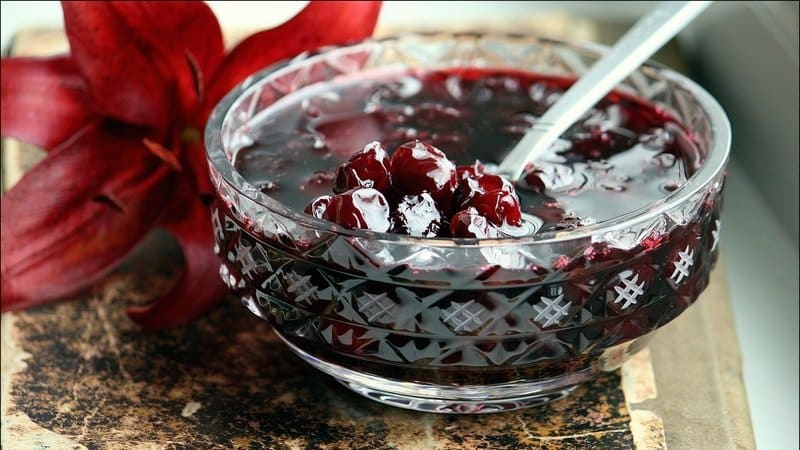
Astakhov's favorite
A universal winter-hardy variety. The tree is fast growing, the shoots are thick and spreading. The fruits are uniform, round, weighing 7-9 g per fruit. The skin is tender, dark red or burgundy, depending on the ripening period. The pulp is juicy and sweet, without sourness. The taste of Lyubimitsa Astakhova is rated 4.8 points out of 5.
Rossoshanskaya gold
A popular and high-yielding variety for planting in central Russia. The crown is pyramidal, the height of the plant is average. The variety is drought-resistant and can be transported. The berries are appetizing, golden in color, weighing about 7 g. The shape is heart-shaped and round.In the sun, cherries acquire an attractive pinkish blush. The taste is sweet and pleasant, the aroma is honey. According to the tasting scale, Rossoshanskaya gets 5 points out of 5.
Self-fertile
Self-fertile cherries do not need pollinating insects, which makes it easier for gardeners to care for the plant. Self-fertile varieties guarantee summer residents high and stable yields.
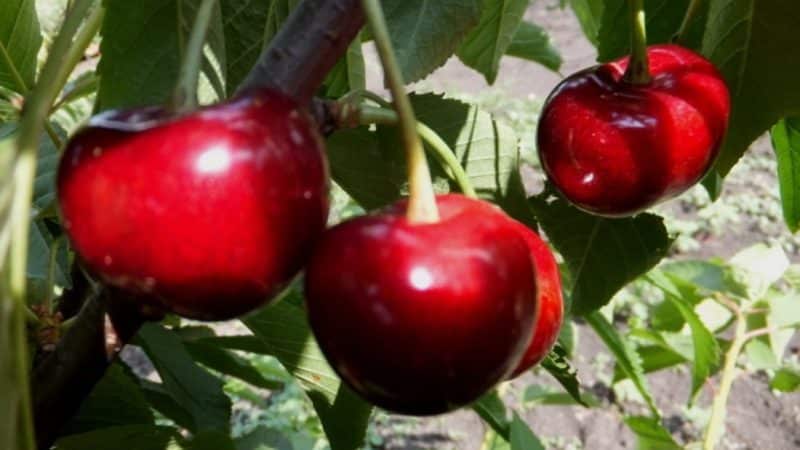
People's Syubarova
Syubarova's Narodnaya cherry tree takes root in any climate zone, is distinguished by its tasty pulp and ease of care. Fruit weight 4-6 g, glossy skin, rich burgundy color. The taste is pleasant, with moderate sourness. Narodnaya ripens at the end of June, the fruiting period is extended - summer residents manage to harvest several times during the season.
Gronkova
Gronkovaya cherries are planted in the Moscow region. The tree is early ripening, the fruits have a universal purpose. The weight of the cherry is about 5 g, the shape is round-heart-shaped, even. The skin is burgundy with a waxy coating. The pulp is dessert, medium density, harmonious sweet taste. The stone is easily separated from the pulp. Among the advantages of Gronkova, self-fertility and stable productivity are noted.
short
Low-growing cherry trees have a compact, semi-spreading crown. The height of the trees is 3-4 m. Such cherries, unlike other varieties, do not take up much space in the garden plot.
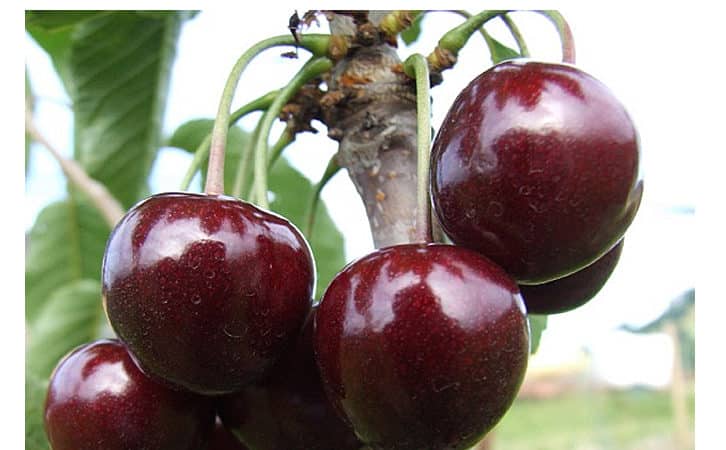
Black Prince
Height 3.5 m, leaves wedge-shaped, deep green color. The Black Prince is self-sterile, so other varieties of cherries are planted nearby. The berries are black and burgundy, weight from 5 to 9 g. The taste is berry-plum, the aroma is rich. The ripening period begins in early June and lasts until the end of July. Black Prince is frost-resistant down to -30°C.
Karina
The tree is compact, with a neat ball-shaped crown.The variety ripens by the end of June. The berries are cone-shaped, dark burgundy in color. The seed is large, round, and tastes sweet. The pulp is medium dense, tender. Karina is frost-resistant and rarely gets sick. Ripe fruits hang on the tree for a long time, do not crack or fall off.
Winter-hardy
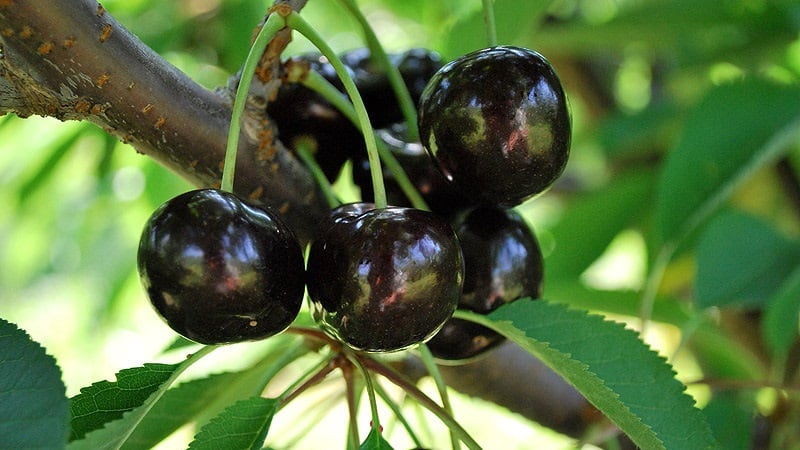
Winter-hardy varieties grown in regions with unstable climates. The trees have strong immunity and can withstand temperatures as low as -30°C. Next, we will consider popular winter-hardy varieties of cherries.
Mascot
The Talisman variety can withstand temperatures down to -26°C and bears fruit consistently. The trees are large with a spherical crown and large leaves. The fruits are heart-shaped, weighing 7-9 g per piece. The skin is dark red, the flesh is pleasant to the taste, sweet and sour. The cherries are scattered throughout the crown, but the fruits ripen at the same time. In 7 years, Talisman produces about 75 kg of tasty harvest.
Staccato
The Canadian industrial variety is frost-resistant and shows stable yields. The height of an adult tree is about 3.5 m, the shoots are strong and even. Fruit weight 10-12 g, heart-shaped, bright red color. The taste of the pulp is juicy, sweet and sour. Cherries ripen in the first ten days of August. Harvest shelf life no more than two weeks. The berries are used fresh or for canning.
Interesting! Of all the varieties of cherries, gardeners especially love weeping trees. These are low-growing, drooping bushes that serve as hedges or simply decorate the garden with their original appearance. The height of the crown of such cherries is 3-4 m, the leaves are glossy, rich green. For weeping varieties, pruning is required.
Varieties suitable for regions
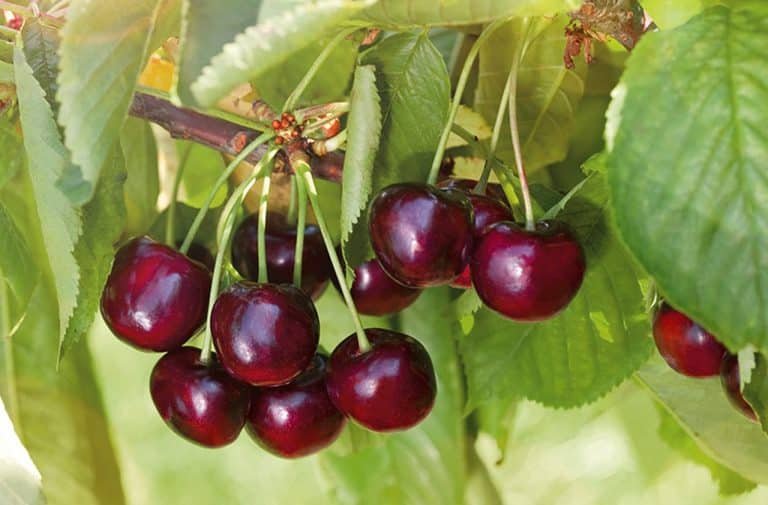
The choice of variety depends on the growing region.Sweet cherry is a southern plant, but many varieties are drought and frost resistant and show stable yields in the Urals and Siberia.
For the Moscow region and the middle zone
For cultivation in the Moscow region choose Golden cherries. The variety is universal and self-sterile, late-ripening. The fruits are round, weight 7 g. The stalk is medium long, the skin is yellow. The flesh is creamy, the taste is sweet. Resistance to diseases and pests is above average.
It is recommended to pay attention to the Orlovskaya pink variety. The tree is medium-sized with a pyramidal crown. The fruits are one-dimensional, spherical, weight about 3.5 g. The pulp is juicy, pink in color, sweet and sour in taste. Oryol rosea is self-sterile and is universal in use.
This is interesting:
For Krasnodar region
The fertile and light soils of the Krasnodar region are suitable for growing Bigarro Burlat cherries. The tree is vigorous, reaches a height of 5-6 m. The flowers are large, white, with a pleasant delicate aroma. The fruits are red-black, weight 7 g, round shape. The pulp is dense and juicy, the taste is sweet dessert. Biggaro Burlat bears fruit 4-5 years after planting and is slightly affected by diseases. The yield of a ten-year-old tree is about 80 kg.
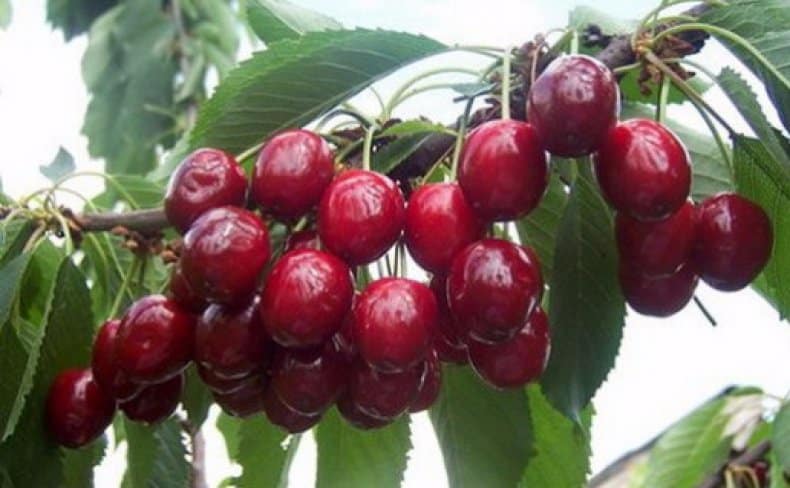
For the Rostov region
The Rostov region is warm and sunny, famous for its nutritious soil and long, hot summers. I recommend Olenka cherries for summer residents to grow. The tree is medium-sized, the foliage is dense. The fruits are large, weight 8-10 g, spherical-heart-shaped, flattened at the edges. The pulp is dark red, medium density. The taste is juicy, with pleasant sourness. Olenka ripens at the beginning of the second ten days of June.
Another variety for growing in the Rostov region is Donchanka.Self-sterile, winter-hardy and productive. The height of a young tree is 3 m, an adult one is 9 m. The leaves are green and large, the flowers are white. The berries are pinkish-yellow, attractive, weighing from 10 to 12 g. The taste is sweet and juicy, with a rich aroma. Donchanka is not prone to cracking and is early-bearing.
For Siberia
The name of the Northern cherry variety speaks for itself - the plant is winter-hardy, tolerates frost and wind. Tree height up to 3 m, semi-spreading crown. The flowers are small, bisexual. Northern cherries bloom in May and begin bearing fruit 4 years after planting.
The shape of the fruit is obtuse-heart-shaped, weight 4 g, color light yellow with blush. The pulp is juicy, sweet and sour. Frost resistance of Severnaya is -34°C, the variety is resistant to fungal diseases. Cherries are recommended for fresh consumption or processing.
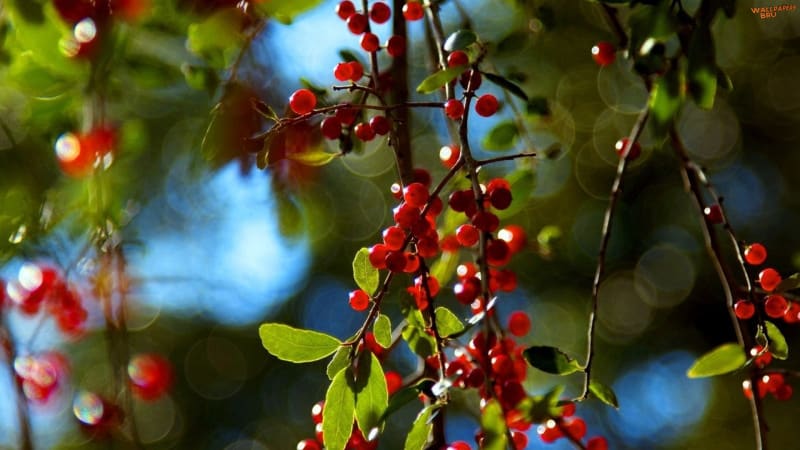
For the Leningrad region
For landing in the Leningrad region choose Krasnaya Gorka cherries. The tree is low-growing, the crown is broadly oval. The fruits are yellow with a pinkish blush, ripen quickly, and do not fall off the tree after ripening. Weight is about 5 g, the pulp is dense, with a high juice content. The color is light red - hence the name of the variety. Cherries are used as an additive to desserts, baked goods, ice cream, hot and cold drinks. The taste is pleasant, sweet and sour.
Attention! Among Russian summer residents, the domestic variety Madonna is popular. The fruits are very beautiful, red-burgundy, glossy skin. Fruit weight 7-9 g, tasting rating 4.7/5. Marmalade, marshmallows, jams, and natural sweets are made from cherries.
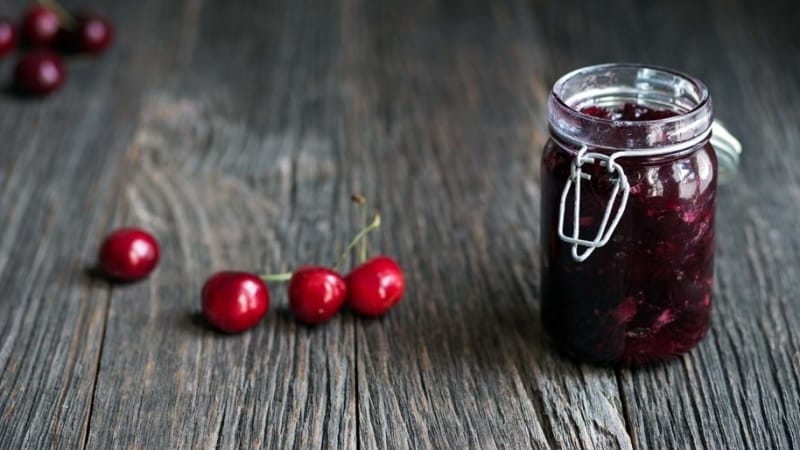
For the Urals
Rondo cherry is popular in the Urals - semi-spreading trees rarely get sick and are resistant to climate change.Rondo blooms already in mid-April; the plant looks especially beautiful in the garden during this period. Fruit weight up to 5 g, round shape. The color of the berries is red-burgundy, attractive. The seed is small, round and easily separated from the pulp. The taste is sugary and delicate. Rondo resists drought and produces a harvest in hot summers.
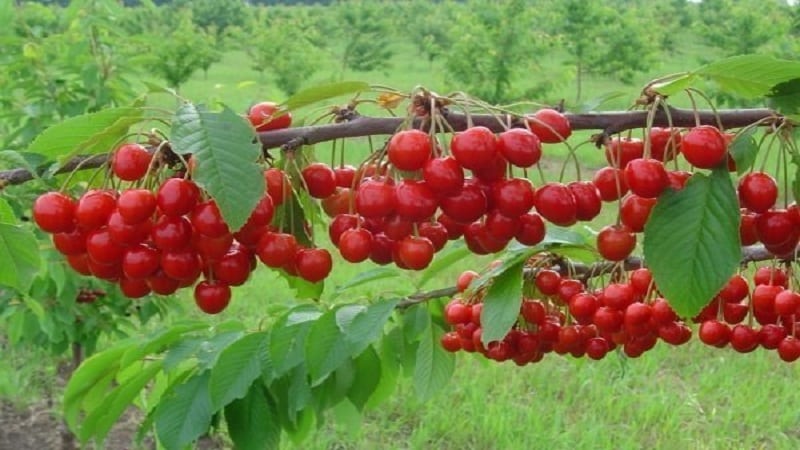
Conclusion
Gardeners from the middle zone choose Talisman, Black Prince, and Oryol pink cherries. Trees frost-resistant, the fruits do not crack and have a pleasant sweet and sour taste. Summer residents from the southern regions prefer Donchanka or Olenka cherries - the berries are juicy and large, weighing 10 g. If the plot is small, then low-growing or weeping varieties are planted - they are distinguished by a compact, semi-spreading crown.